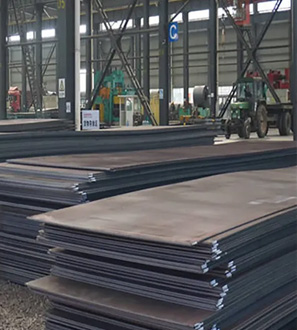Thank you
You are interested in Our support !
Tinplate: Characteristics and Production
Tin plated steel sheet, commonly known as tinplate steel, refers to a cold-rolled thin steel plate coated with a thin layer of metal tin on the surface. It has a certain strength and hardness, good formability, and easy welding ability. The tin layer is non-toxic and tasteless, and the surface is bright. Tin mainly plays a role in preventing corrosion and rust. According to the production process, steels are divided into hot-dip tin plated steel sheets and electro-tin plated steel sheets. Commonly used canned bottles and beverage cans are made of tin plated steel sheets.
Ⅰ. Main features of tin plated steel sheet
The main feature of tin plated steel sheet is that the tin-plated layer has the dual performance of electrochemical cathode and anode protection. In a vacuum food can with a complex mixture (or weak acid hydrolysis), the potential of the inner wall is lower than that of the base material iron. Tin is the anode, and its dissolution protects the iron. During the validity period of the food can, the dissolved amount of tin is basically harmless to the human body. The outer wall is in the atmosphere, and the tin layer is in a cathodic protection state. With such chemical stability, it is unmatched by other can-making materials.
Ⅱ. Production methods of tin plated steel sheet
There are two methods for producing tin plated steel sheets: hot-dip plating and electroplating. The thickness of the tin-plated layer of the hot-dip method is thick and uneven, the coating thickness is also hard to control, the amount of tin consumed is large, the efficiency is low, and its application is limited. So it is gradually eliminated by the electroplating method. The electroplating method uses the electroplating process to evenly coat the tin film on the steel plate substrate, which has high productivity, low cost, thin and uniform coating, and can produce different coating thicknesses. It can also be plated on one or both sides. The electroplating methods mainly include alkaline electroplating, sulfate electroplating, halogen electroplating, and borofluoric acid electroplating.
1. Acid plating method
The Froststein type of acid electroplating method is the most commonly used, accounting for about 70% of the total number of operating lines. This method has high current efficiency and density, moderate operating temperature, and is easy to control. The line speed can reach up to about 450m/min.
The borofluoric acid electroplating solution in the acid process line has higher current density tolerance and cathode efficiency and can be operated at low temperatures, but the electroplating solution is more complicated in configuration and requires high corrosion resistance. The speed of the unit can reach 500m/min.
2. Halogen plating method
The halogen plating method is worked in a horizontal line. The current density can reach 40~60A/dm2, the cathode efficiency is high at the low-temperature operation. The electrolyte is corrosive, the unit speed is up to 760m/min, and the characteristic is high productivity.
3. Alkaline plating method
The alkaline electroplating method of tin plated steel sheet uses sodium stannate as the electrolyte, and the current density, production speed, and current efficiency are low. But the corrosiveness is general, the process is outdated, and there are not many productions online at present.
 English
English  中文
中文  Español
Español 



